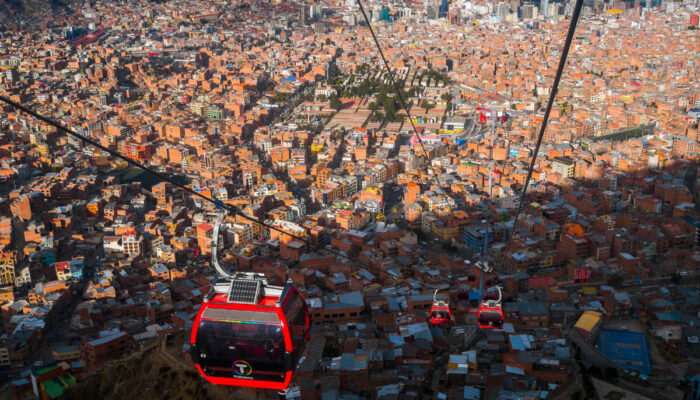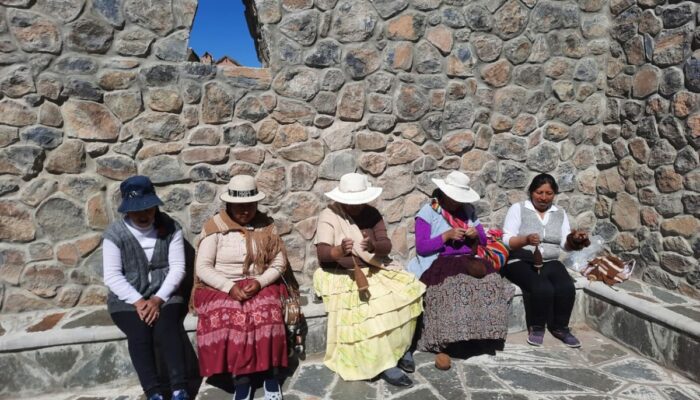Work? Love? Health ? Luck? This New Year, send your best wishes to the guardian of the Andean home: Ekeko!
Celebrated every 24 January in La Paz during the Alasitas fair, this is the perfect month to tell you all about his legend and his impact on the lives of Bolivians.
Who is he? Where does he come from? Why does he smoke a cigarette? And does he have supernatural powers?
In Bolivia, this curious character is considered to be the god of abundance. He is represented by a statuette to which people add miniatures of the material goods they covet.
Thaki Voyage takes you on a journey to discover the secrets of this little man from Andean mythology, a symbol of fertility and prosperity.
A legend at the crossroads of indigenous culture and Spanish beliefs
Ekeko is part of the rituals of the Altiplano region, which is why it is found in northern Chile and Argentina, but above all in southern Peru and Bolivia.
Originating in the pre-Inca civilisation of Tiwanaku, Ekeko, which means “dwarf” in the Aymara language, was most likely born in Bolivia with the Illa divinity.
The god of abundance, fertility and joy was originally a stone figurine named Illa. Her features are indigenous and her naked body symbolises fertility.
This 15.5 cm statue was stolen from the Tiwanaku site by the Swiss naturalist Johann Jakob von Tschudi, exhibited in Bern and recently returned to Bolivia.
It can be considered the ‘first’ Ekeko in history, even if it bears little resemblance to the figure we see today.
The arrival of the Spanish colonists changed her physical appearance, giving her a “more Western” look, a paler face and clothes to hide her apparent nudity.
Indeed, the cult of the divinity of Ekeko took on a new dimension in La Paz with the Spanish governor Don Sebastián de Segurola.
In 1781, during the siege of the city during Túpac Katari’s indigenous uprising against Spanish rule, the inhabitants were deprived of food.
Legend has it that, despite this terrible famine, Don Sebastián de Segurola was spared the shortage thanks to one of his servants, Paulita Tintaya, who provided him with food before explaining the identity of his benefactor: Ekeko.
In gratitude, he decided to pay homage to this mysterious man who had protected him and authorised this indigenous custom in the town.
To this day, Ekeko is still regarded as an object of worship and a good-luck charm for which people have great respect.
A smiling, cheerful character who is much appreciated in Bolivia
Nowadays, Ekeko is a statuette made of plaster or ceramic and forms part of Bolivian craftsmanship. This small, slightly round man with a moustache is recognisable by his typical highland clothing.
His face, which features a subtle smile, reveals a mouth with a large opening, which allows him to smoke, as giving him cigarettes is a tradition.
Legend has it that when Ekeko smokes a whole cigarette, his wishes come true, but if he only smokes half a cigarette, his wishes are not fulfilled. It’s also not uncommon to offer him alcohol.
Look closely at Ekeko and you’ll see that he carries a large number of packages on his back. These objects represent the wishes you wish to fulfil during the year.
If you dream of economic prosperity, your wish will be fulfilled on Ekeko in the form of a miniature banknote. Among the most frequent wishes are: household utensils, lottery or plane tickets, a car, a house, plenty of food or even a baby, as Ekeko also favours love encounters.
What’s more, you can write down what you want on a piece of paper and stick it to this little man’s body for abundance and good luck.
It is impressive to see the faith that Bolivians have in Ekeko, who is usually present in every home. This cheerful character with his smile is considered a true friend within the family.
Ekeko, the central character of the Alasitas festival.
Ekeko is so popular in Bolivia that a cultural event called the Alasitas Fair is dedicated to it every 24 January in the country’s capital, and lasts for several weeks.
Established by the Spaniard Sebastián de Segurola in La Paz in 1781, the fair is an opportunity to buy the goods you wish to acquire in real size during the current year, as well as Ekeko statuettes, which are on display at all the stands in the city.
At the fair, it’s possible to get all sorts of miniatures, but beyond the material aspect, it’s also possible to get a miniature of more intangible projects, like a university degree for example.
Indeed, a certain greed can shine through during this event, in contradiction with Aymara values, which advocate balance and community; but Ekeko can also symbolise a personal asset that you wish to share with as many people as possible, as being in harmony with the Pachamama remains a tradition and is part of Bolivian culture. The offerings are therefore a way of thanking Ekeko, who must be blessed by a spiritual guide of the Aymara people, a yatiri, once the miniatures have been attached to the statuette.
Since 2017, this celebration has been listed as a UNESCO cultural heritage site, making it a must-see when you visit Bolivia.
The indigenous god Ekeko, part amulet for good luck, part mystical deity, will bring you happiness and energy in the New Year.
If you’re looking for abundance, give it to your friends after your trip to Bolivia, where you’ll have the chance to experience the Alasitas festival in La Paz and discover a new facet of this country and its beliefs. And even though he is not recognised by the Catholic Church, Ekeko is a veritable saint in the country.
So, even if wishes can’t be said, what is your wish for 2023? Thaki Voyage is waiting to make it come true!
Mathilde Leroux



